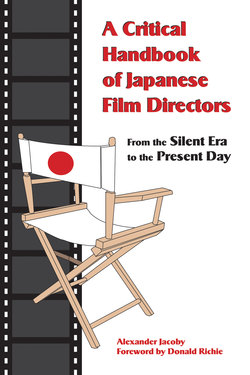Читать книгу A Critical Handbook of Japanese Film Directors - Alexander Jacoby - Страница 27
HATANAKA Ryōha
Оглавление(b. May 21, 1877; d. 1963, precise date unknown)
畑中蓼坡
Primarily associated with the stage, Hatanaka trained as an actor in New York before returning to Japan in 1918, where he joined the theatrical company of actress Sumako Matsui, a pioneer of Western-style shingeki theater in Japan. After her suicide, he continued to work in shingeki, appearing in such plays as Chekhov’s Uncle Vanya. His output as a filmmaker was limited, comprising only four films. Of these the most famous today is Winter Camellias (Kantsubaki, 1921), a melodrama, extremely well-acted by Masao Inoue and Yaeko Mizutani, about an elderly miller who kills his daughter’s disreputable suitor when he plans to rob her employers. In this film, Hatanaka combined Western and Japanese elements: the lyrical landscape shots were indebted to the American cinema of the teens, but the plot was rooted in the native traditions of shinpa, while long, static dialogue scenes were clearly conceived for the benshi to explain.
Hatanaka’s next film as director, Children of the Street (Chimata no ko, 1924), was a socially conscious account of urban child poverty; though also extant, it lacks the fame of its predecessor. After co-directing Easygoing Dad (Nonkina tōsan, 1925) with Tokuji Ozawa, Hatanaka returned to the theater. His postwar career included acting roles in some noteworthy Nikkatsu films, such as Tomotaka Tasaka’s The Pram (Ubaguruma, 1955) and Tadashi Imai’s Darkness at Noon (Mahiru no ankoku, 1956).
1921 Kantsubaki / Winter Camellias
1924 Chimata no ko / Children of the Street
1925 Nakayama Yasubei / Yasubei Nakayama
Nonkina tōsan / Easygoing Dad (co-director)
